Your cart is currently empty!
Sir Nigel Gresley
Sustaining the legacy

Class W1
The LNER class W1 No. 10000 “Hush-Hush” was an experimental steam locomotive designed by Nigel Gresley in 1929 and fitted with a high-pressure water-tube boiler.

The experimental Gresley class W1 No. 10000 “Hush-Hush” was the only 4-6-4 tender locomotive to run in Britain. It included a number of experimental features including a marine type water-tube boiler working at 450psi. Although this original design is usually dismissed as a failure due to the revolutionary water-tube boiler, No. 10000 did successfully work a number of high-profile trains. No. 10000 was completely rebuilt and re-entered service in 1937 with a conventional boiler and A4-style streamlining. Both before and after rebuilding, No. 10000 never carried a name, although it was often referred to as the “Hush-Hush” due to the initial secrecy of the project, and the names British Enterprise and Pegasus names were proposed at different times.
Development of the class W1 also started in 1924, when Gresley was considering ways of efficiently generating steam which used less coal than the (then) heavy coal consumption of the class A1 Pacifics. In September 1924, Gresley approached Harold Yarrow (of Yarrow & Co.), and the resulting water-tube boiler consisted of a long steam drum, and four water drums. The water drums were connected to the steam drum with a series of tubes through which water circulated.

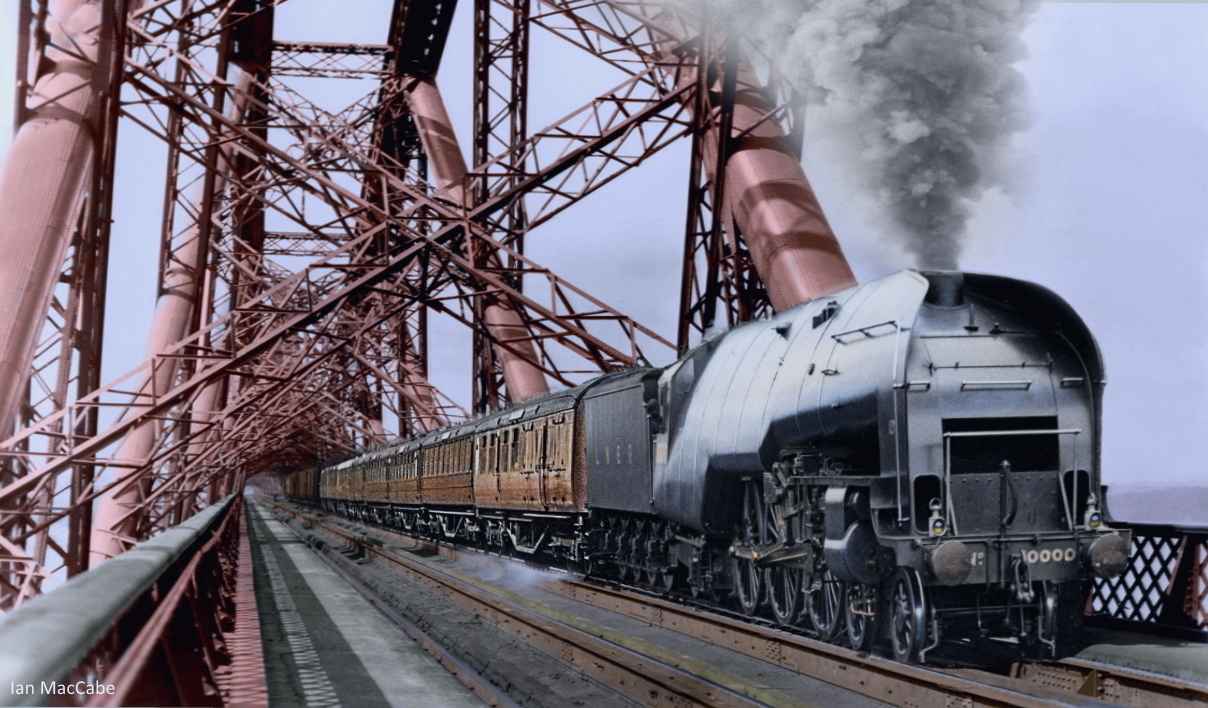
Gresley instructed Darlington to change the wheel arrangement to 4-6-4. Technically, the rear bogie was partially articulated and the rear axle was a true pony truck. Hence, the W1 was technically a 4-6-2-2, rather than a Hudson (Baltic) 4-6-4. However, officially it was initially referred to as 4-6-4HP, although later drawings describe it as just “No. 10000” or “class W1”.
Although an official announcement of the “Hush-Hush” was still a month away, news of a mysterious new locomotive began to leak out of Doncaster Works. By February 1929, the boiler had been constructed and fitted to the smokebox. Simultaneously, Professor W.E.Dalby conducted a series of wind tunnel experiments which resulted in the unusual front end. The partially-assembled locomotive was shipped to Darlington. To maintain secrecy, shipping over LMS lines required the locomotive to be sheeted up.
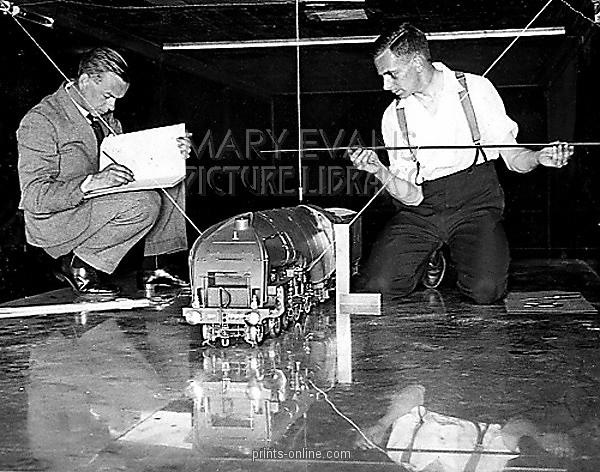
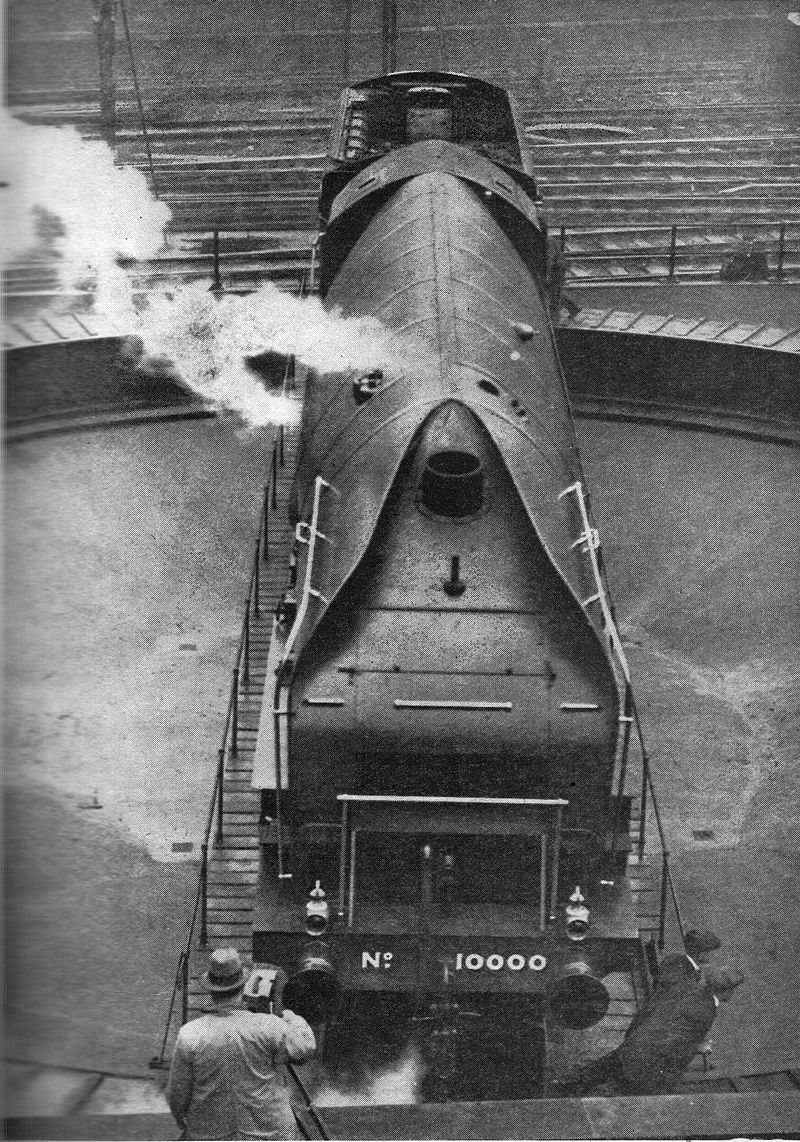
The locomotive was completed in November 1929, and first ran on 12th December. It then experienced six months of trials (including modifications), before entering traffic. Initial trials showed some problems with the W1 as it was built. This resulted in a series of modifications being made in April 1930. After further tests, No. 10000 “Hush-Hush” entered service on 20th June 1930 in a modified condition.
By August 1930, No. 10000 entered Darlington Works due to a leaking regulator valve. The opportunity was also taken to perform further modifications. In April 1932, No.10000 return to Darlington for further boiler repairs and the fitting of a new reducing valve for the manifold and further modifications were made.


No. 10000 reached the 70,000 mile mark in May 1933, and it entered Darlington Works for its first general repair. The opportunity was used to apply further modifications. Chapelon recommended that the exhaust from the high-pressure cylinders should be re-superheated before being reused in the low-pressure cylinders. Gresley accepted this recommendation, and fitted an intermediate superheater of 153sq.ft. The locomotive returned to service in June 1934.
Another of Chapelon’s recommendations was the addition of a Kylchap (Kylala-Chapelon) exhaust arrangement. In 1934, the class P2 Cock o’the North appeared. This was the first LNER locomotive with the Kylchap arrangement, and in 1935 Gresley ordered No. 10000 to have the same arrangement fitted. It re-entered Darlington on 14th June for a hood smoke-lifter to be fitted and No. 10000 re-entered service on 10th July 1935.
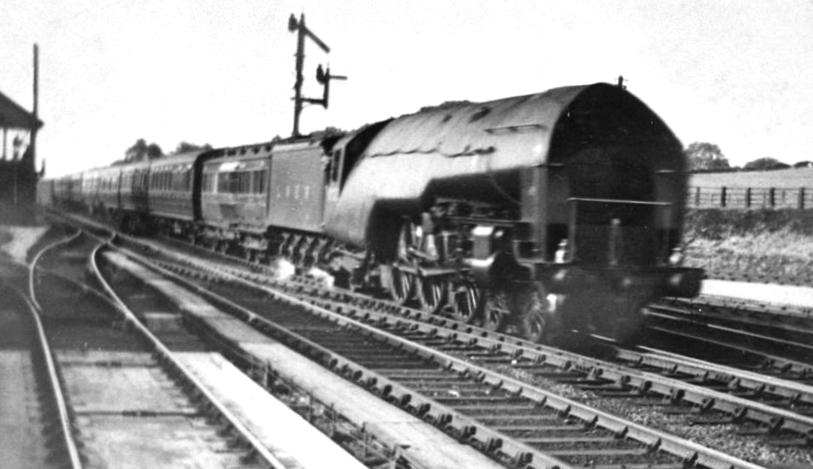
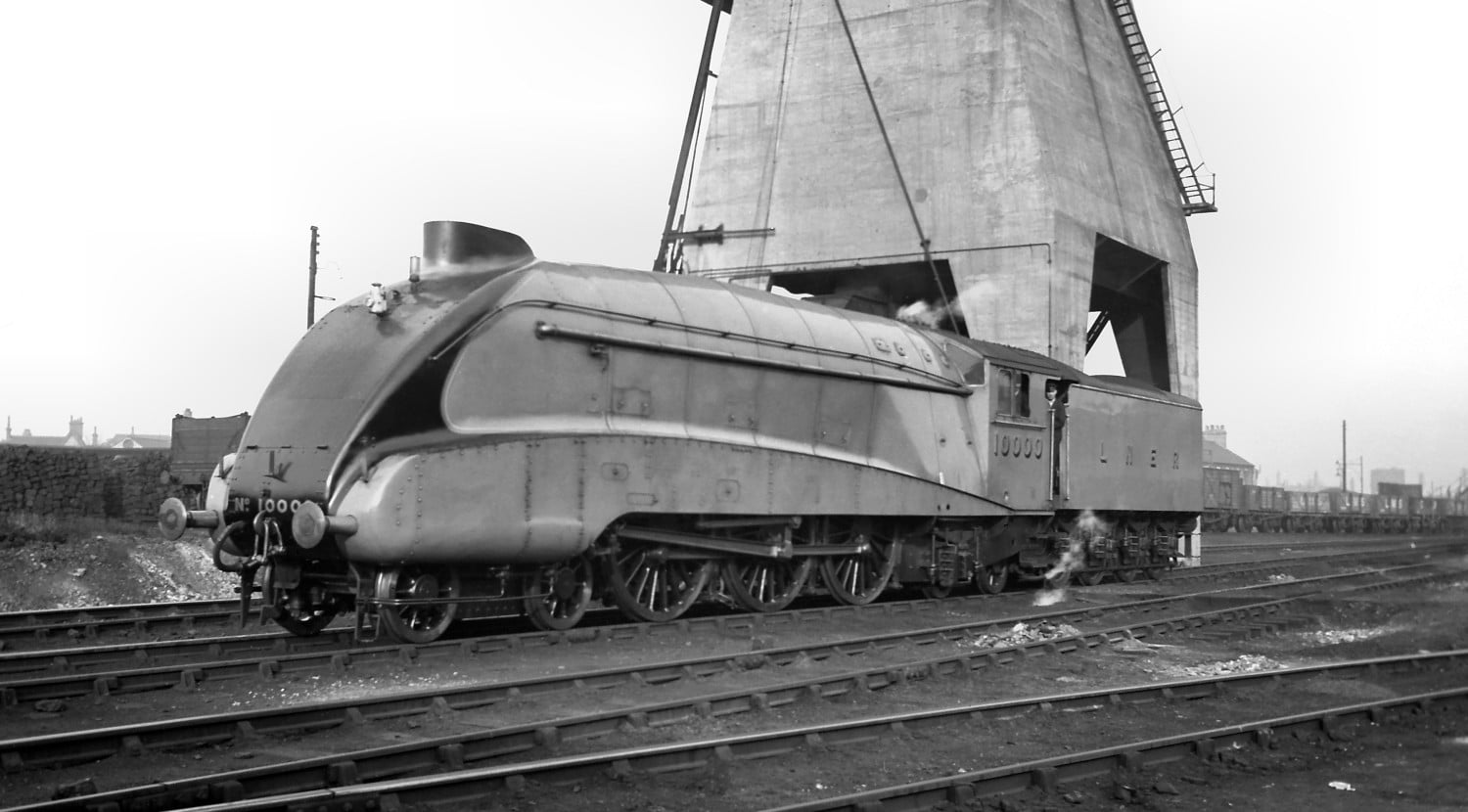
No. 10000 entered Darlington Works again on 21st August 1935 for further repairs, having run about 90,000 miles since new. A number of further modifications were being considered, when Gresley ordered all further work to stop whilst he considered a scheme to rebuild it with a conventional fire-tube boiler. On 13th October 1936, the water-tube boiler class W1 made its last journey: from Darlington Works to Doncaster Works to be rebuilt with a conventional fire-tube boiler. Out of the 1,888 days since it was built, No. 10000 spent 1,105 days in Darlington Works.
After the rebuild, the water-tube boiler was returned to Darlington and used for pressure testing and space heating between 1939 and 1965. It was finally cut-up on 10th April 1965, outliving the rebuilt class W1 by almost six years.
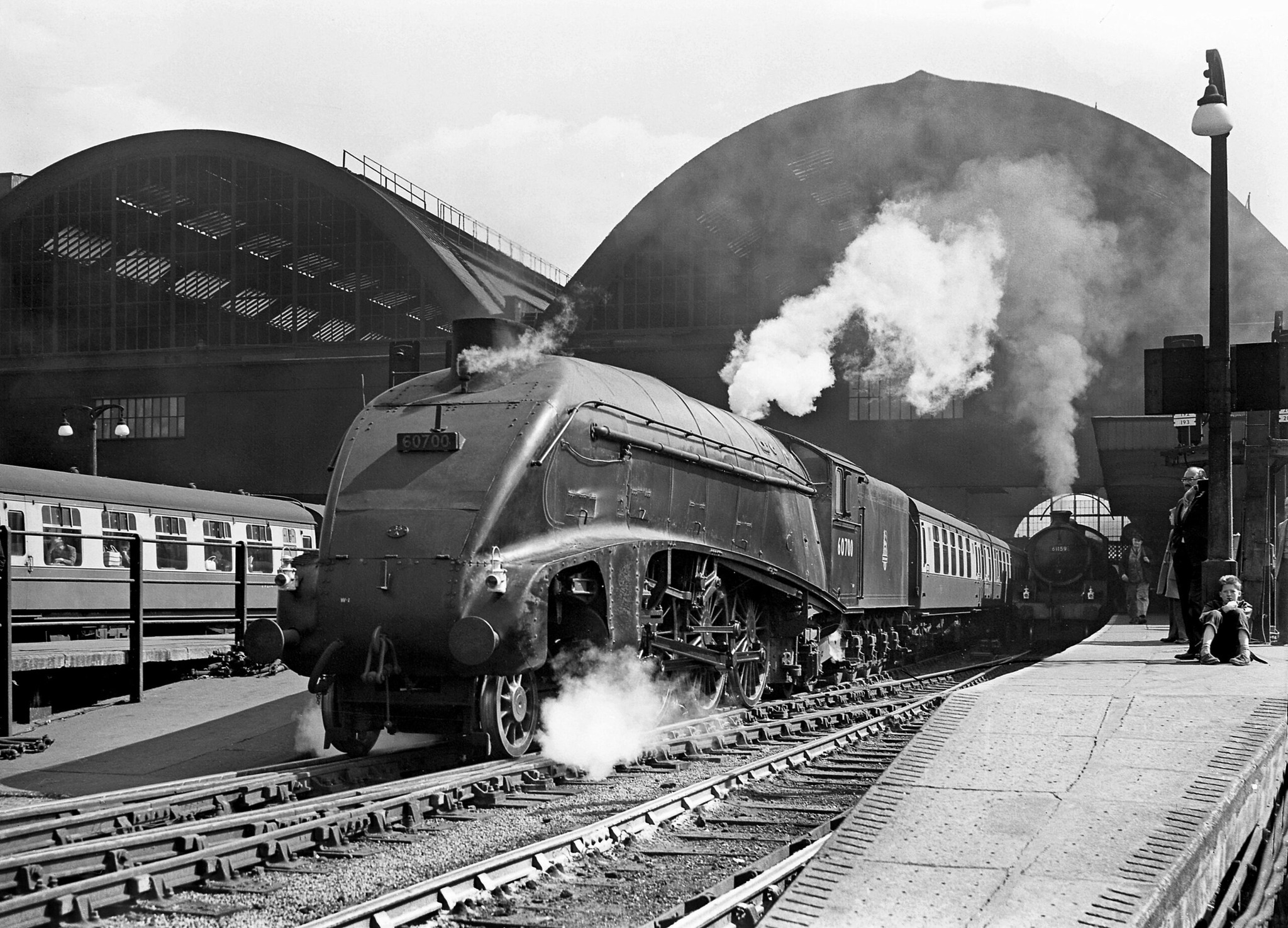

An outline design similar to class P2/2 Wolf of Badenoch was produced by 24th November 1936. This design had three 20in cylinders, a boiler pressure of 250psi, and A4-style streamlining. When No. 10000 finally emerged from Doncaster in November 1937, it closely resembled this outline plan. As much as possible of the original locomotive was kept, including the frames which had to be shortened by 18in. The trailing wheel arrangement was left unchanged. As with the Gresley Pacifics, the outside cylinders had Walschaerts valve gear, whilst the inside cylinder had conjugated valve gear.
No. 10000 retained its number under the Thompson 1943 renumbering scheme, but was renumbered to No. 60700 under the British Railways. The class W1 departed from standard LNER livery practice. In its original form, it was painted dark battleship grey with steel clothing bands. The number, No. 10000, was painted on the cab sides with 12in white numbers and 1.25in black shading. The bufferbeam was also grey with shaded white lettering. After rebuilding, No. 10000 was painted in the standard class A4 garter blue livery. The wartime black ‘NE’ livery was applied in April 1942, but reverted back to garter blue in December 1946. British Railways applied a white lined darker blue livery in January 1951, and the standard BR green with orange and black lining in May 1952.

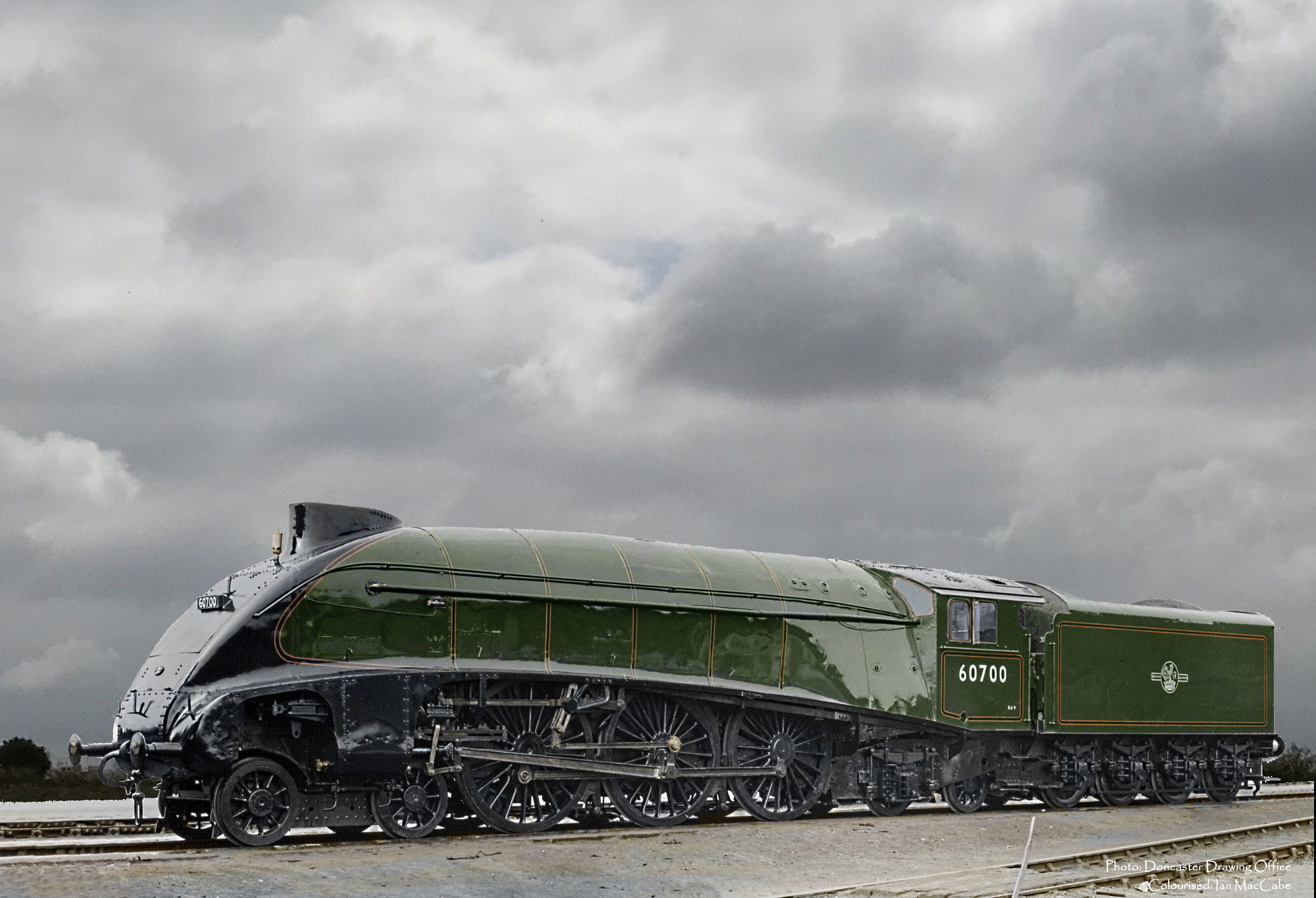
The rebuilt class W1 was withdrawn in June 1959 and did not survive into preservation. However, one of its tenders did survive. Tender No. 5484 was ordered in March 1929 to the New Type Corridor design used on the class A1 and class A3 Pacifics but with disc wheels rather than spoked wheels, and was attached to class W1 No. 10000 Hush-Hush through to 1948. Today, it is paired with preserved class A4 No. 60009 Union of South Africa.
